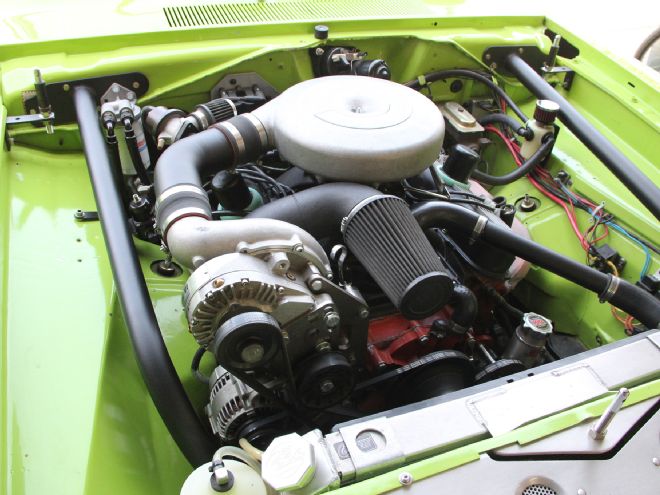
If you are reading this because you have a blow-through turbocharger or beltdriven supercharger on your carbureted V8, we have the cause and solution for your problems. Blow-through supercharging means your boost toy delivers air through a carb hat and into a carburetor. Fuel is introduced and delivered as an atomized mixture to the intake manifold runners, then finally through the intake valve, and into the cylinder.
Problems occur when the system begins to produce boost. Forced air pressurizes all of the parts of the carb that were not designed to see pressure. Forced air affects the floats, the throttle shafts, and the air/fuel ratio.
Float bowls use a needle and seat to control the amount of fuel that enters the bowl. The average fuel pump creates 7 psi of fuel pressure to lift the needle off the seat and fill the bowl with fuel. Once boost reaches 7 psi, fuel stops flowing. The solution is a boost-referenced fuel-pressure regulator that adds fuel pressure at a 1:1 ratio. We've also heard that boost pressure in the bowl can crush plastic floats, requiring brass replacements.
I got rid of the drama of getting the car to start and idle. —Shannon Hudson
When you pressurize throttle shafts, the pressure will force air and fuel past the bushings, causing a leak. Boost leak isn't the problem here—rather, it's the fuel dripping on a hot manifold.
The last and likely the worst problem is the primary and secondary jetting required to maintain a safe air/fuel ratio at wide-open throttle (WOT). A 750-cfm carburetor usually has 72 jets in the primary side. We've seen 10 or more additional jet sizes in both the primary and secondary to maintain a safe air/fuel ratio at higher engine speeds and boost levels. With such huge jets, the midrange and cruise ratios are often 10.0:1 or richer, making the part-throttle response and fuel economy suffer. In extreme circumstances, the primaries will be so lean and secondaries will be so rich to compensate, that the corresponding cylinders will also be rich or lean. To be fair, this can be controlled with specialized power valves that deliver enrichment fuel at different boost levels, but it requires either a specialized carburetor or a blow-through expert to modify what you have. Big boost numbers will also drag fuel from one booster to another inside the carb hat, causing individual intake runners to starve for fuel.
Fuel-injection systems don't have float bowls, jets, or power valves, so idle and midrange air/fuel ratios can be controlled more effectively and WOT fuel enrichment is handled by a computer instead. What you get is a more stable fuel curve and better idle and midrange throttle response, better mileage, and hopefully, more usable power. We tested Holley's Terminator EFI on Shannon Hudson's 1969 Plymouth Valiant with a blow-through Paxton supercharger. It ran poorly for a long time, and then it ran great. Here's how he did it.
Parts
DescriptionPNPrice ($) Terminator EFI 4-bbl550-4062,049.95 3-bar MAP554-10783.95 Inline fuel system526-4399.95
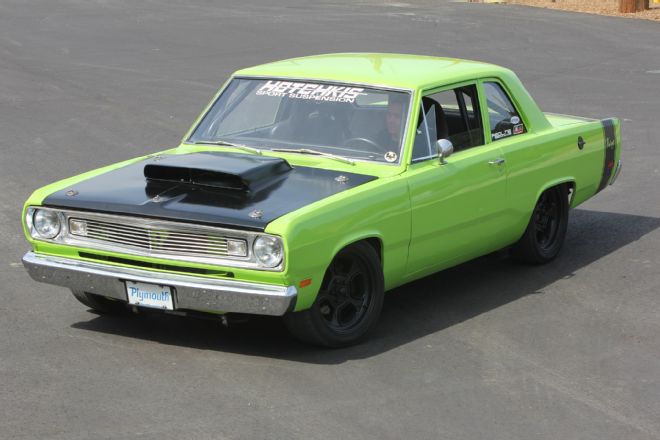
Shannon Hudson is the owner and operator of Redline Gauge Works in Newhall, California. The Valiant is a 1969 with a 360-inch LA small-block, flat-tappet cam, 9.0:1 compression, cast pistons, and ported "j" heads. It makes about 400 hp at the wheels. The transmission is a 904 TorqueFlite built by Jerry Staples.
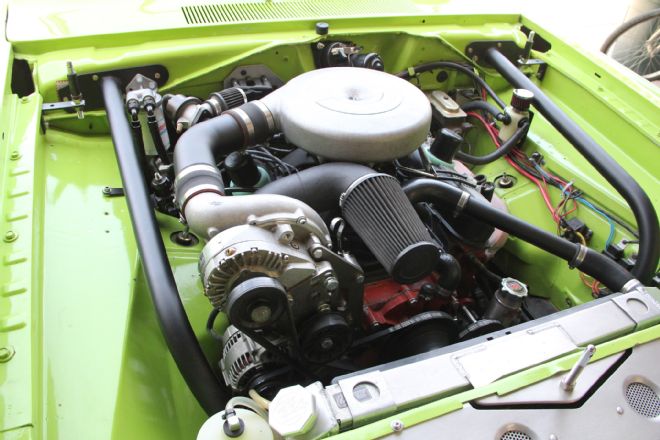
The supercharger is a Paxton Novi 1200 that Hudson picked up two years ago and installed himself. The system blows through a Holley 750 double pumper using a Paxton Power Hat. The system makes about 5 pounds of boost.
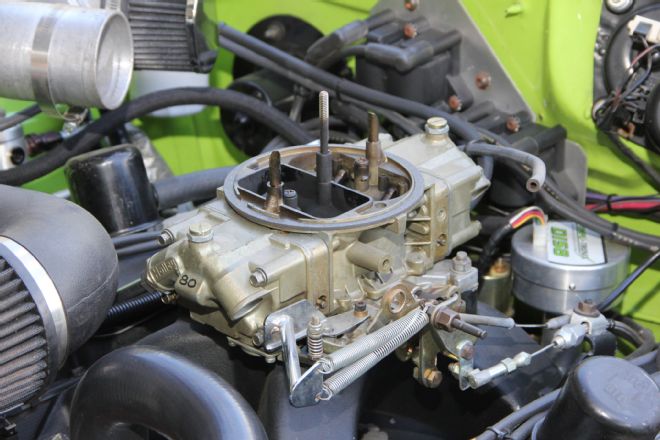
You can already see a couple of things that were going on with the blow-through carb setup. The primaries are black from a rich air/fuel ratio and we are guessing a few backfires. The jetting combo was a whopping 80 primary and 91 secondary.
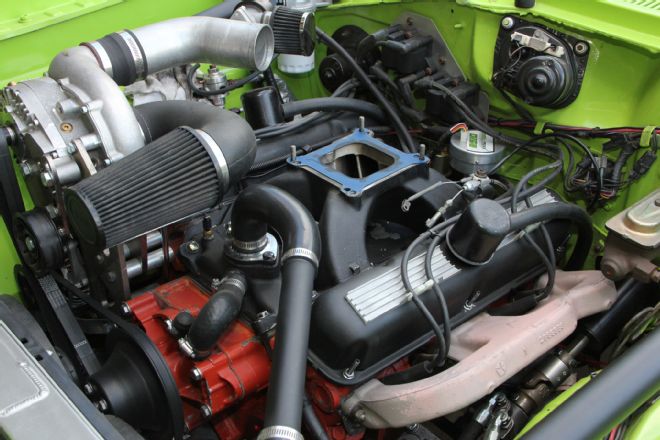
The intake is a Mopar M1 single-plane manifold that was on the original build. We've had luck with the Edelbrock RPM Air Gap for its superior fuel distribution and torque output, so we might have to try one in the future.
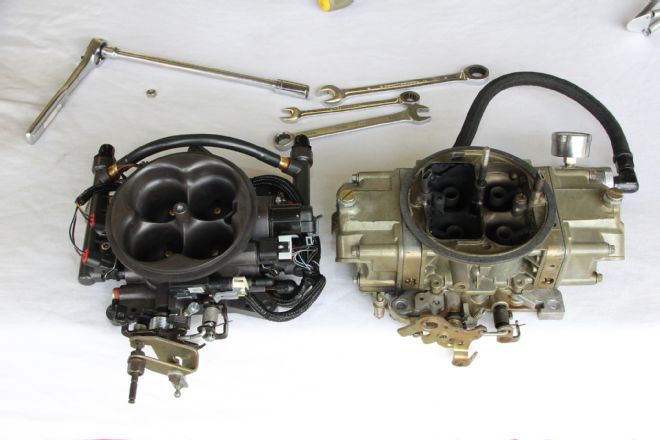
The Terminator EFI is a direct swap for any 4150-style square-flange carburetor. The stock linkage and aftermarket return springs were an exact fit.
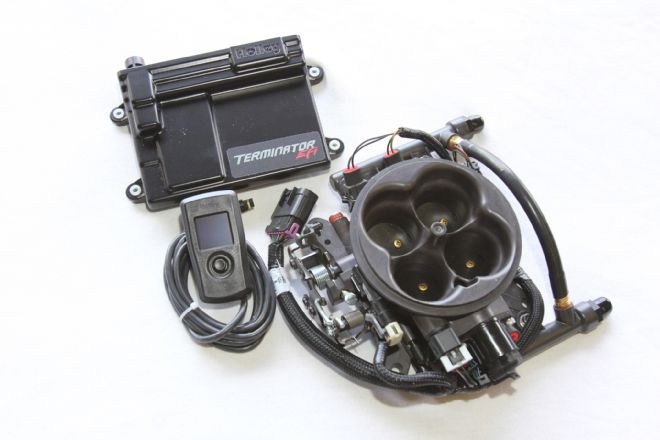
This is a direct replacement for your 600–950-cfm carburetor. The 80-lb/hr injectors can handle 250–600hp engines. It plugs into your factory or aftermarket distributor with a Holley harness adapter and uses factory-style sensors and connectors for easy service.
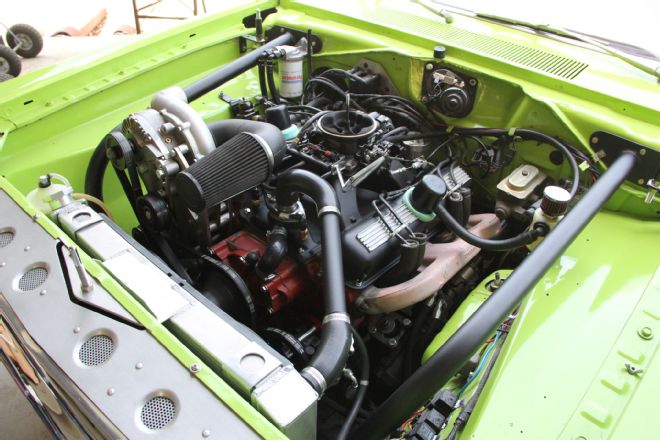
Here you can see the original linkage and transmission kickdown for the 904 bolted directly to the throttle-body.
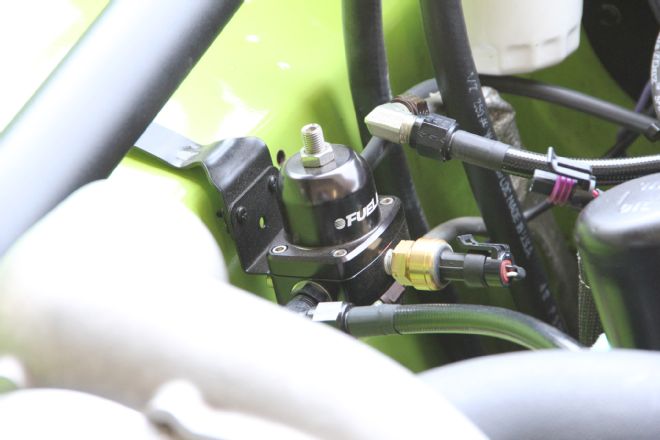
Hudson had a Fuel Lab pressure regulator from the previous installation. The transducer is for the electronic fuel gauge inside the car. Holley offers both a boost-referenced regulator and a complete fuel system that includes billet filters, stainless hose, fittings, and a billet fuel pump if you need it.
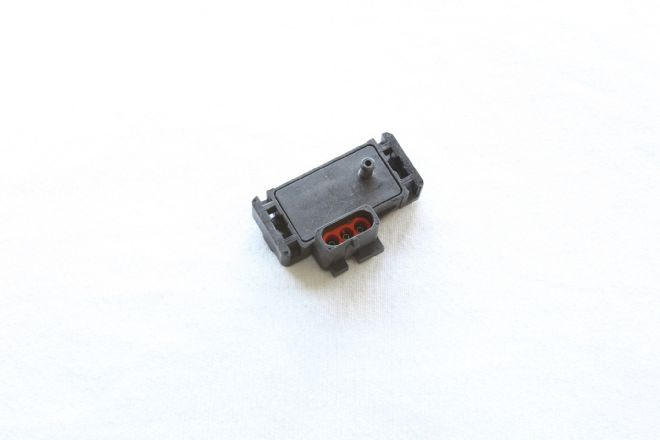
A bar is a fancy word for around 14.7 pounds of air pressure, or one atmosphere. A 2-bar map can read up to 30 psi, a 3-bar 45, and so on. The MAP communicates that information to the self-tuning ECU.
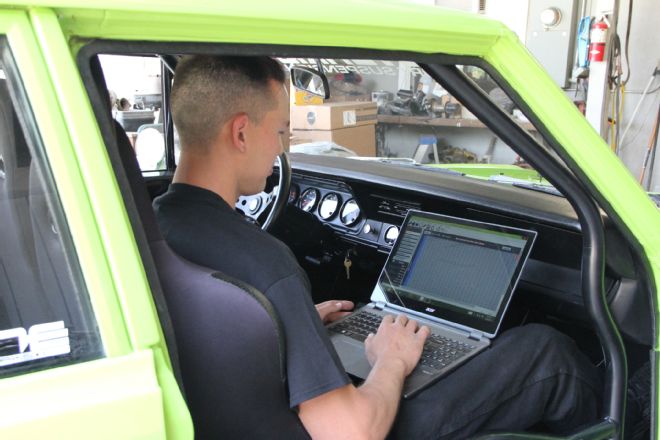
To use the 3-bar MAP, Hudson needed to load a program to recognize the change. This can be done via Wi-Fi by a Holley service technician.
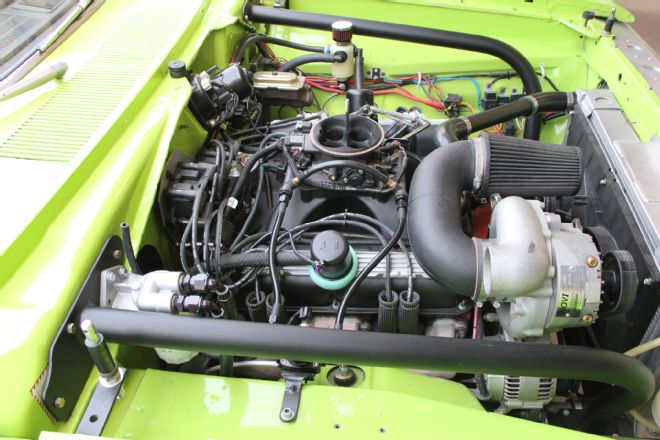
Hudson used a dual-feed pressure regulator that feeds from the fuel tank to twin ports, and then out to the throttle-body. Note the crossover to equalize the pressure, it came with the kit. The system is designed for 45 pounds of fuel pressure.
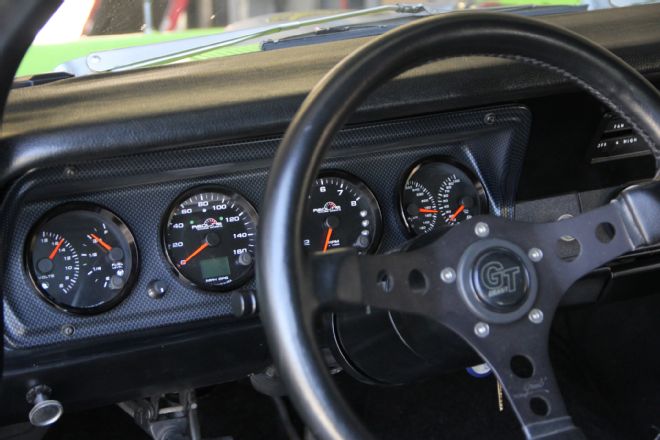
Everything is included. The power wire needs to go directly to the battery to properly power the ECU and to reduce electronic noise that will interfere with its operation.

Yes, there is a port for your power brakes, and yes, there is a port for your vacuum advance.

Redline Gauge Works builds custom dashboards and can make virtually any gauge. These gauges are customized fuel level, volts, water temp, oil pressure, and a GPS speedometer from Speed Hut. Hudson can create any font and any face for almost any gauge.
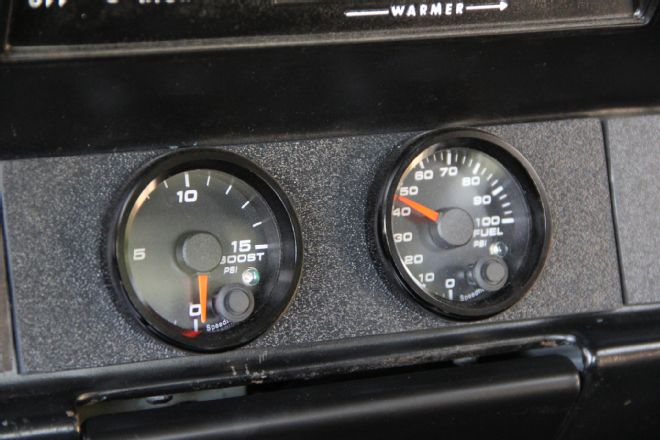
The fuel gauge is isolated at the regulator so there is no pressurized fuel anywhere near the driver. The boost gauge uses a transducer to relay information to the ECU and back to the gauge.
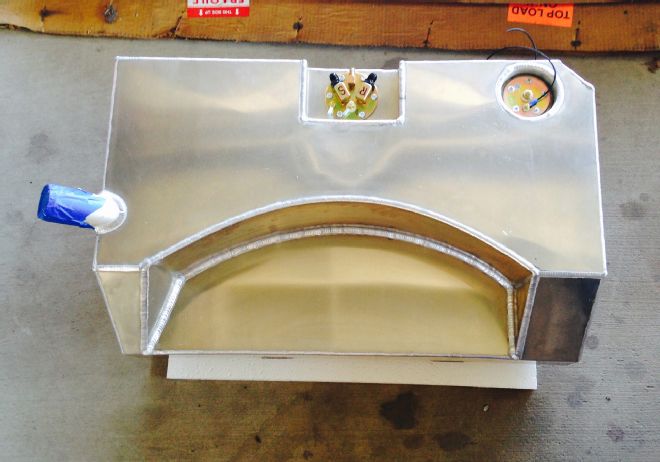
Originally, Hudson used a Walbro 255 mounted on the frame and connected to the factory fuel-tank pickup modified to have a return line. On hot days, the return system would heat the fuel and the pump, causing a drop in fuel pressure. The new tank is from Hot Rod City Garage in San Bernardino, California. It was built to order with an in-tank pump. Holley recommends the pump deliver 255 lph or 400 lb/hr at 45 psi minimum.